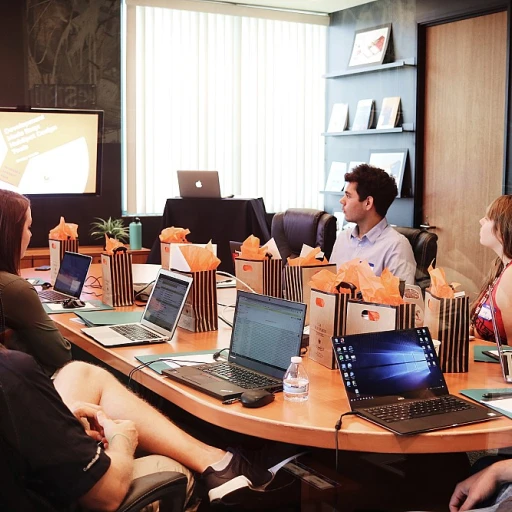
Understanding the Procurement Landscape in the Arabian Emirates
Procurement Dynamics in Arabian Emirates
Understanding the procurement landscape in the Arabian Emirates is crucial for organizations aiming to optimize their operations. The region's procurement environment is influenced by its strategic location, which acts as an international trade hub, fostering vibrant supplier relationships domestically and internationally. Organizations seek to enhance their procurement processes by integrating comprehensive procurement assessment strategies. These steps contribute to identifying each supplier's potential risks and ensuring effective risk management. A well-structured procurement strategy is pivotal to streamlining procurement activities, from the initial purchase request to the final procurement of goods and services. Additionally, public procurement plays a significant role in the region, with strict regulations governing procurement processes. This ensures transparency and accountability in procurement activities across organizations engaging in long-term contracts and strategic sourcing. Supply chain efficiency hinges on accurate data analysis and contract management. By leveraging supplier performance metrics, organizations can ensure efficient supplier selection and mitigate potential risks, ultimately leading to enhanced procurement efficacy. To further enhance workplace efficiency, consider reading about optimizing your workspace with a pneumatic height adjustable desk.Key Challenges in Procurement Process Assessment
Addressing Complications in Procurement
Within the vibrant business environment of the Arabian Emirates, procurement remains a highly intricate process that faces numerous challenges. Identifying these challenges is a crucial step towards enhancing procurement efficiency. These challenges typically arise from various factors, such as organizational constraints, supplier interactions, and the overall risk management involved. Firstly, one major hurdle is the complexity of supplier relationships. Establishing and maintaining productive supplier relationships is a core element of effective procurement. An organization must strategically select suppliers, ensuring the alignment with its long-term goals and the capability to provide the required products and services efficiently. Secondly, risk assessment and management are pivotal challenges. Organizations must conduct thorough procurement assessments to identify potential risks associated with suppliers, such as inconsistent supplier performance or fluctuations in the supply chain. This involves assembling a skilled procurement team to evaluate these risks accurately. Thirdly, the strategic management of procurement processes necessitates the integration of streamlined procurement activities with precise data handling. This ensures informed decision-making, which is critical for issuing seamless purchase orders and contracts. Moreover, public procurement carries its own set of challenges due to the need for transparency and adherence to regulatory standards. Organizations must ensure compliance while maintaining the agility needed for effective strategic sourcing. Lastly, aligning the procurement strategy with organizational objectives is vital to overcoming challenges. This involves identifying procurement activities that contribute to overall organizational goals and implementing a strategic sourcing approach that anticipates and mitigates potential risks. Considering these challenges, companies seeking to enhance procurement efficiency in a competitive market should focus on strategic assessments and solutions like those discussed in this guide. For further insights on optimizing procurement activities and improving workplace efficiency, explore ergonomic desk solutions.Strategies for Effective Procurement Process Assessment
Strategies for Streamlining Procurement Processes
To address the challenges inherent in procurement, organizations in the Arabian Emirates must adopt strategic measures to improve their procurement processes. A well-formulated procurement strategy not only enhances efficiency but also ensures that organizations effectively manage potential risks and cultivate successful supplier relationships.
1. Comprehensive Risk Assessment
Undertaking a thorough risk assessment is a critical first step. This involves identifying potential risks that may affect the procurement process, such as supplier performance issues or changes in market conditions. Risk management strategies should be put in place to mitigate these risks proactively, ensuring seamless procurement activities.
2. Strategic Sourcing and Supplier Selection
A strategic approach to sourcing involves identifying and selecting suppliers that align with the organization’s long-term goals. This includes evaluating suppliers’ track records, financial stability, and capacity to deliver goods and services effectively. This strategic sourcing helps minimize procurement-related risks and enhances supplier performance.
3. Enhanced Supplier Relationships
Building and maintaining strong relationships with suppliers is essential for a successful procurement process. Engaging in open communication, negotiating beneficial terms, and fostering long-term partnerships with suppliers can lead to improved contract performance and more favorable purchase conditions.
4. Data-Driven Decision Making
Leveraging data from past procurement activities enables organizations to make informed decisions about future purchases. Data analysis can identify purchasing trends, assess supplier performance, and highlight areas for improvement. This data-driven approach ensures strategic procurement decisions that align with the organization's objectives.
5. Implementing Technological Solutions
Incorporating advanced technology into the procurement process can significantly improve efficiency. Many organizations are adopting procurement software and automated systems to streamline purchase orders, contract management, and supplier assessments. Integrating these solutions ensures that procurement teams can focus on more strategic activities rather than administrative tasks. Learn more about enhancing office comfort and efficiency with a recliner chair on wheels.
By employing these strategies, Arabian Emirate companies can transform their procurement processes into streamlined, effective frameworks that reduce risks and promote organizational success.
The Role of Technology in Modern Procurement
Boosting Procurement Processes through Technology Integration
Modern advancements in technology have become essential for the effective streamlining of procurement processes within organizations in the Arabian Emirates. Implementing innovative solutions can significantly boost efficiency and strategic sourcing by enhancing supplier relationships and optimizing the supply chain. Utilizing data-driven technologies allows organizations to conduct thorough procurement assessments. This practice helps in identifying potential risks and understanding the performance of suppliers. With a robust risk management framework, procurement teams can evaluate risk early, ensuring that goods and services are acquired with minimal complications. Many procurement activities are now automated, which reduces manual errors and accelerates the procurement strategy. For instance, applications that facilitate purchase orders make it easier for companies to maintain accurate records, track supplier performance, and ensure timely deliveries. Strategic use of technology is also evident in public procurement, where transparency is paramount. Advanced analytics tools help organizations assess contracts and engage in effective procurement management by identifying potential areas for cost optimization and efficiency enhancements. Incorporating the right technological tools and platforms is a critical step to refine the procurement processes. By doing so, companies not only mitigate risks but also ensure that they are well-prepared for the evolving landscape of procurement activities. This proactive approach in leveraging technology ensures sustainable long-term benefits for the organization.Case Studies: Successful Procurement Process Improvements
Success Stories: Boosting Procurement Efficiency
The procurement landscape in Arabian Emirates companies has seen remarkable improvements with several organizations successfully optimizing their processes. These success stories provide valuable insights into enhancing procurement activities, ensuring the efficient purchase of goods and services, and minimizing risks.
One significant example comes from a prominent public sector organization that aimed to refine its procurement processes. This entity conducted a thorough procurement assessment to identify inefficiencies in their supplier selection and contract management. By implementing a strategic sourcing approach, they streamlined supplier relationships and improved supplier performance.
Through diligent data analysis and risk assessment, the organization recognized the potential risks associated with specific suppliers. As a result, they enhanced their supplier selection criteria to focus on long-term reliability and value delivery. This strategic move not only mitigated risks but also reinforced their supply chain stability.
Another noteworthy case involved a large retail company that faced challenges in managing extensive procurement activities. By adopting modern procurement technology, the organization automated their purchase order system, minimizing manual errors and speeding up the procurement process. The integration of data-driven decision-making tools allowed them to track supplier performance and optimize procurement management.
These companies' efforts underline the importance of having a robust procurement strategy that embraces both technology and strategic planning. Their ability to adapt and implement effective procurement processes has significantly elevated their organizational efficiency and competitiveness in the market.













